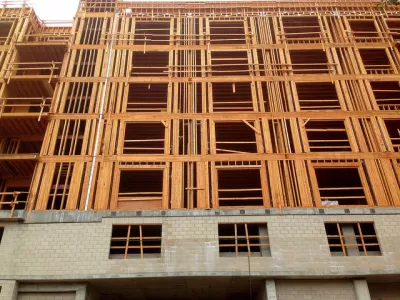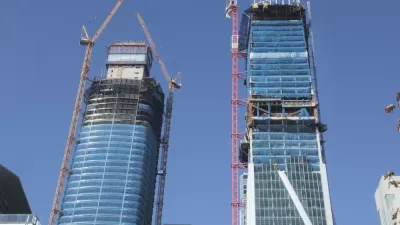California State Senator Scott Wiener argues that advocating for subsidized affordable housing isn't enough. Anyone concerned with ending the state's housing crisis needs to get behind market-rate development.

There's affordable housing, and then there's affordable housing. Scott Wiener wades into the debate: "the problem is that as much as I and others support and work to expand subsidized, income-based affordable housing, we will never — and I truly mean never — produce enough of that housing to satisfy all, or even most, of our housing needs."
In California, "luxury housing" has become a very loaded term. "Some describe all new market-rate housing as 'luxury housing,' because it's expensive. Well, of course it's expensive, since for decades we haven't built enough of it."
But the numbers don't add up when it comes to subsidized units. "Statewide, California has only 664,000 affordable, income-based rental homes for a population of about 40 million, leaving more than 1.54 million of California’s lowest income households without access to affordable housing. Putting that in context, California has grown by 3.1 million people in the past decade and 16 million people since 1980."
Wiener describes a "perfect storm of shortsighted policies and lack of political leadership has completely jacked up the cost of housing," and says that those who won't support market-rate housing are contributing to the problem. "It's not that all this housing is luxury housing — it's that we have created a world where it is a luxury to have housing at all, given public policies specifically designed to stifle housing production."
FULL STORY: Market-Rate Housing Isn’t a Bad Word, and We Won’t Solve the Housing Crisis Without It

Planetizen Federal Action Tracker
A weekly monitor of how Trump’s orders and actions are impacting planners and planning in America.

Restaurant Patios Were a Pandemic Win — Why Were They so Hard to Keep?
Social distancing requirements and changes in travel patterns prompted cities to pilot new uses for street and sidewalk space. Then it got complicated.

Map: Where Senate Republicans Want to Sell Your Public Lands
For public land advocates, the Senate Republicans’ proposal to sell millions of acres of public land in the West is “the biggest fight of their careers.”

Maui's Vacation Rental Debate Turns Ugly
Verbal attacks, misinformation campaigns and fistfights plague a high-stakes debate to convert thousands of vacation rentals into long-term housing.

San Francisco Suspends Traffic Calming Amidst Record Deaths
Citing “a challenging fiscal landscape,” the city will cease the program on the heels of 42 traffic deaths, including 24 pedestrians.

California Homeless Arrests, Citations Spike After Ruling
An investigation reveals that anti-homeless actions increased up to 500% after Grants Pass v. Johnson — even in cities claiming no policy change.
Urban Design for Planners 1: Software Tools
This six-course series explores essential urban design concepts using open source software and equips planners with the tools they need to participate fully in the urban design process.
Planning for Universal Design
Learn the tools for implementing Universal Design in planning regulations.
Heyer Gruel & Associates PA
JM Goldson LLC
Custer County Colorado
City of Camden Redevelopment Agency
City of Astoria
Transportation Research & Education Center (TREC) at Portland State University
Camden Redevelopment Agency
City of Claremont
Municipality of Princeton (NJ)





























